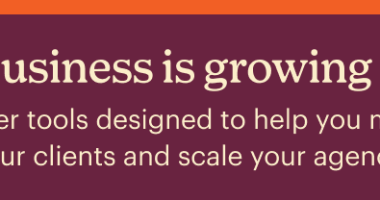
August 14, 2020 7 min read
Opinions expressed by Entrepreneur contributors are their own.
Finding new customers isn’t easy. So when you do find a customer, you want to make sure you’re earning as much as possible and providing the best experience for them.
One of the most effective ways to do this is to offer “upsells” and “cross-sells” — additional offers after the initial purchase.
These allow you to serve your customers at a higher level and increase revenue at the same time.
The fact is: If you don’t offer anything after the initial purchase, you may be leaving money on the table and leaving your customers with unsolved problems (that they’ll go elsewhere to get help with). Not good!
3 ways to earn more revenue after the initial sale
I’m going to highlight three different types of post-purchase offers you can make to boost your revenue with the customers you already have.
1. Offer a higher-tiered product or service
This is the most standard form of upselling. When someone buys a product or service, you can pitch them a more robust offer that addresses the same problem or need, but at a higher level.
For example, if you’re selling a coffee press, you could offer an upgrade to your “Complete Coffee Kit” with a grinder, filters and more.
Related: This Company Thrives by Giving Away 20 Percent of Its Revenue
If you’re running a subscription software business and someone buys your basic plan, you can ask if they’d like to upgrade to a Gold or Platinum tier to unlock additional features. Or, you could ask if they’d like to pay yearly instead of monthly to save 15%.
If you’re selling an e-book or course on a topic, you can ask customers if they’d like to upgrade to get a live coaching package and learn directly from you as well.
There are many ways to present this and it will depend on your business.
2. Offer a related or complementary product or service
Next, you can offer something that compliments their original purchase but addresses a different problem.
This is known as cross-selling.
For example, my company sells a job interview answer PDF. When somebody orders, we ask if they’d also like to add our salary negotiation guide.
While this second product addresses a different need, it logically follows the first product and fits the general situation that they’re in.
Related: See How Much Revenue Apple, Amazon and Alphabet Make Every Second
Last month, 17% of customers added this additional product to their order in the same transaction. This is additional revenue without any added effort on our part (aside from creating the product and setting up the sales systems initially, which I’ll discuss later in this article).
3. Recommend products or services from other businesses
Finally, you can create a partnership with other companies to refer customers and receive a commission on sales.
Here’s an example of how (and why) you may want to do this:
Imagine you’re a solar roofing company. Business is going well, but your customers are starting to ask for help with more than just roofing.
You have no desire to become a general contractor or work on entire homes, but you’d like to help your customers find good solutions.
To solve this, you could form partnerships with other companies in the industry. You could find a company that sells energy-efficient appliances, for example. You could also refer people to a company that handles energy-efficient windows and doors.
The best way to decide which businesses to partner with is to look at what your customers are already asking you for help with.
As another example, if you’re a digital advertising agency, but a couple of clients have asked you if you can build them a new website, you could partner with a web development firm. That way, you have a reliable place to send customers who ask for a website in the future.
Doing this allows you to maintain your core focus in your business and not spread yourself too thin, but still provide a more complete solution to your customers.
If you do make a recommendation following this model, you should disclose that you have a business relationship with the other company. As long as you’re transparent and have good reasons for recommending them, your customers will appreciate the referral.
Related: This Founder Found Better Customers and Increased Her Revenue by Increasing Her Price
In terms of fees, it’s reasonable to ask for a 20% commission from service businesses for new customers you send them. For referrals to businesses selling digital products like e-books and courses, 50% is common. For physical products, the commission will vary and may be lower due to lower margins for the seller (they have additional costs like manufacturing, shipping and packaging).
Implementation
We looked at three different types of upsells and cross-sells above, so now let’s look at the best ways to implement these offers and deliver the message to your customer.
The best approach for your business will depend on your product offer and price point.
1. The one-click upsell
With the one-click offer, you’re offering an immediate upgrade or additional add-on as a part of the checkout process. I mentioned an example of this earlier, where I offer customers of my job interview guide an immediate discount on my salary negotiation guide if they add it to their cart.
The exact way this will be presented to your customer depends on your checkout software and you may have multiple options to choose from.
For example, you may be able to add a yes/no checkbox with your upsell offer on the same checkout form that you’re already using.
Other systems allow you to present the offer immediately after the first transaction is completed, either via a popup notification or a redirection to a new web page.
You may also be able to choose between multiple options. Consult with your checkout software provider for more info. If your software allows multiple options, you can test them to see which performs best.
2. Email follow-ups
If you don’t want to present your offer within your checkout process, you can use email marketing tools like ActiveCampaign or MailChimp to schedule a follow-up email whenever somebody buys a product or service from you.
This is another good way to notify your customers about what else you offer. You could also include a discount code to encourage future purchases.
3. Phone follow-ups
For a more personalized touch, you can follow-up on the phone with a customer. This is better for higher-ticket products and services.
While I wouldn’t expect a phone call after ordering towels or a laptop stand online, it’s something I’d appreciate after buying a $2,500 coaching package or paying a large deposit to get a new driveway built.
4. A card, letter, or in-product offer
If you prefer a physical card over email, that’s another good option to present an upsell after the initial purchase.
If you’re shipping a physical product, you can include a card right within the package you’re sending.
If a customer ordered a digital product like an e-book, you can mention your upsell within the product itself (ideally near the end, after they’ve consumed the material and gotten value from it).
Maximizing your revenue
It takes time, effort and money to acquire new customers and find new leads, so you should do everything possible to maximize your revenue when you do find a new customer.
By offering upsells and cross-sells, you can address more of your customers’ needs and provide more value to them while boosting your income at the same time.
loading…
This article is from Entrepreneur.com








